Downloaded 604 times
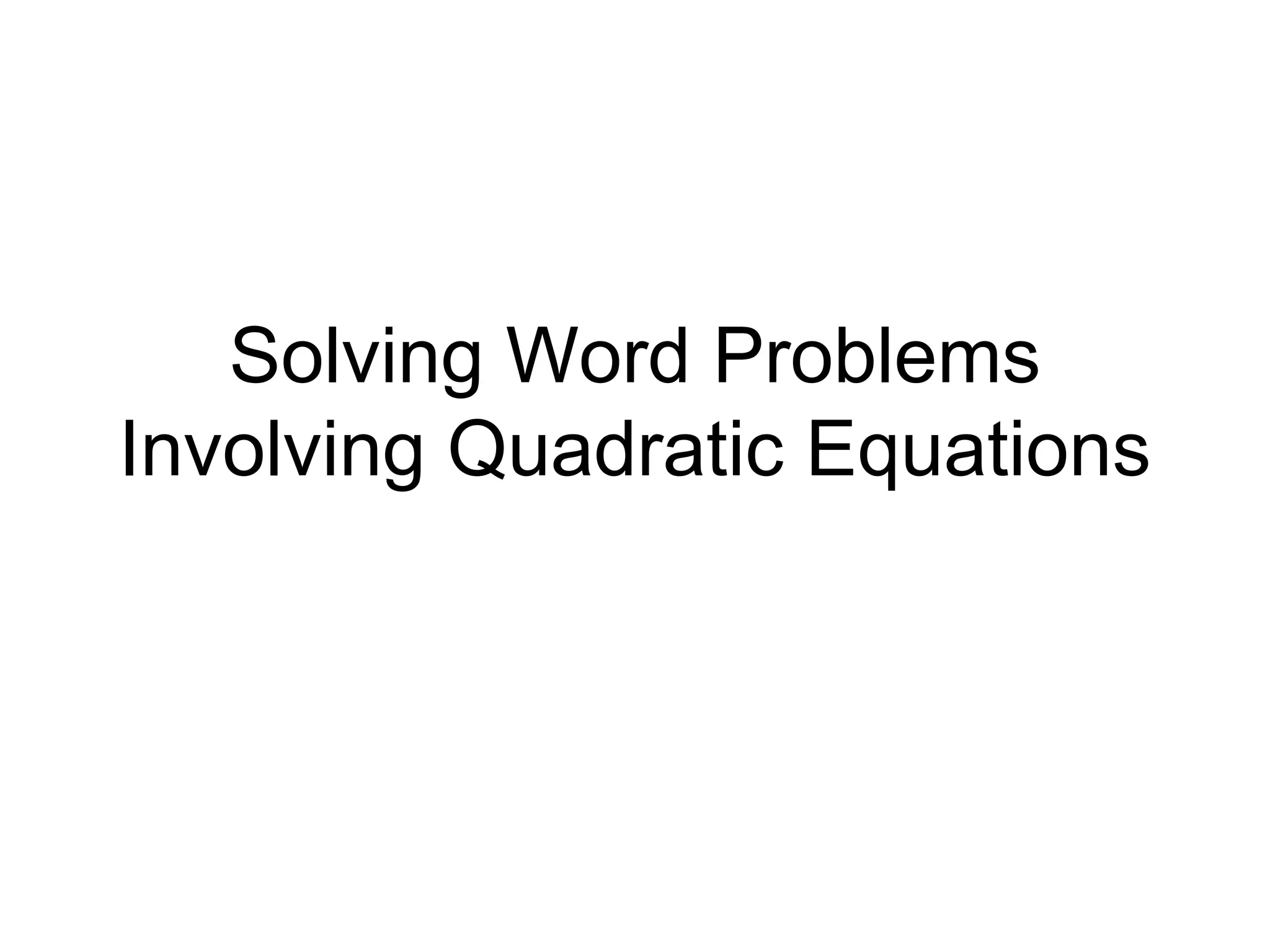
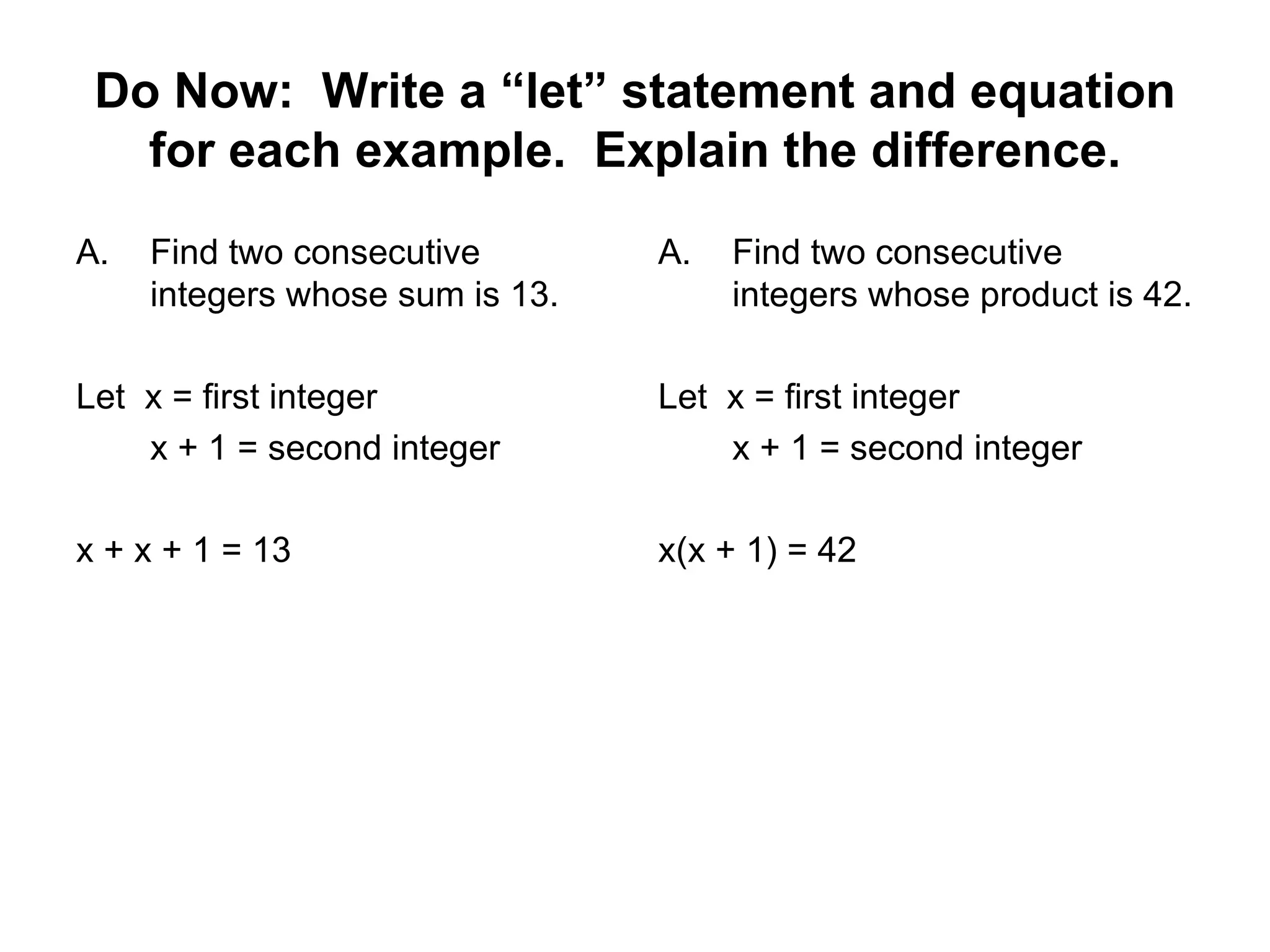
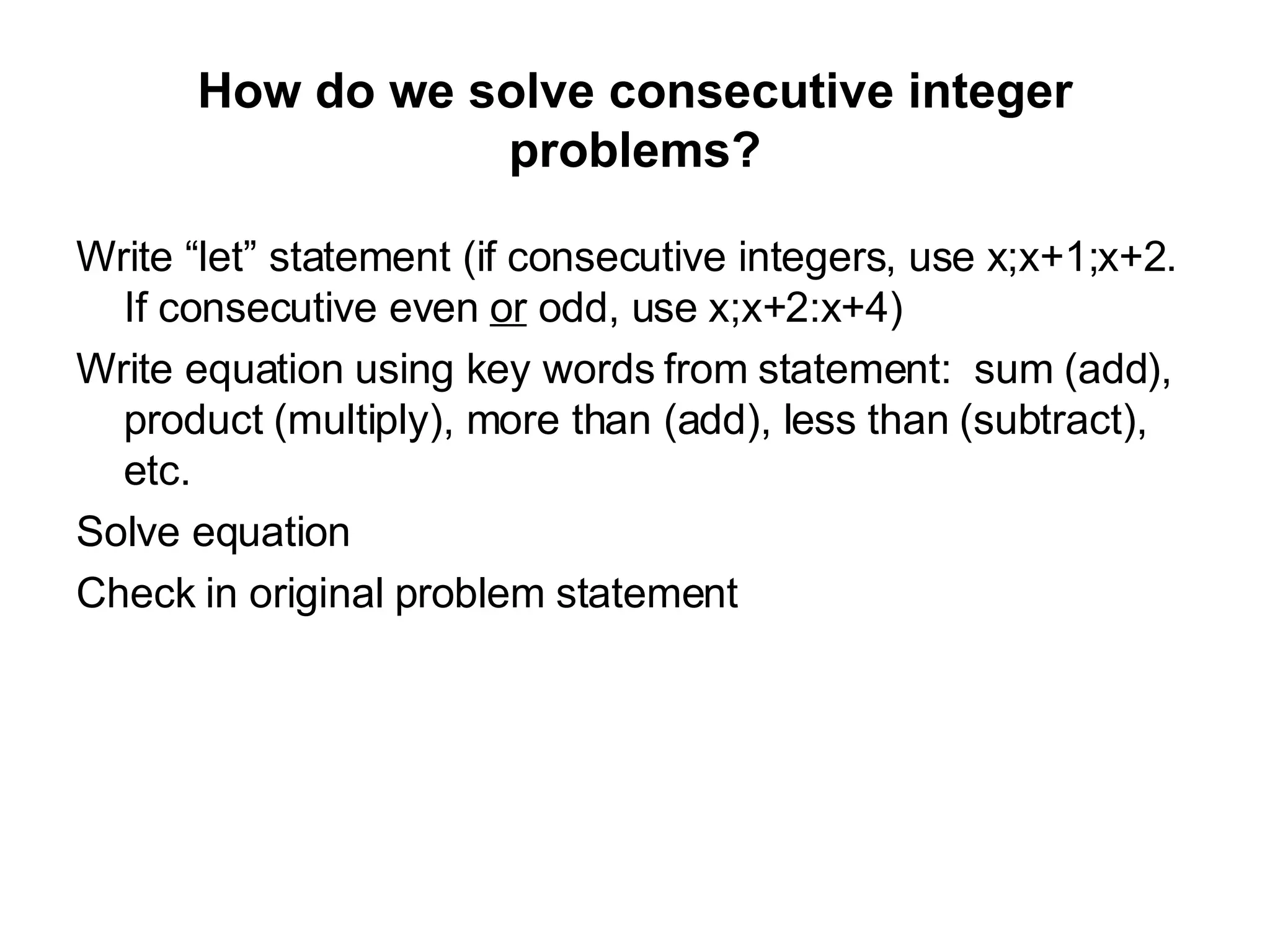
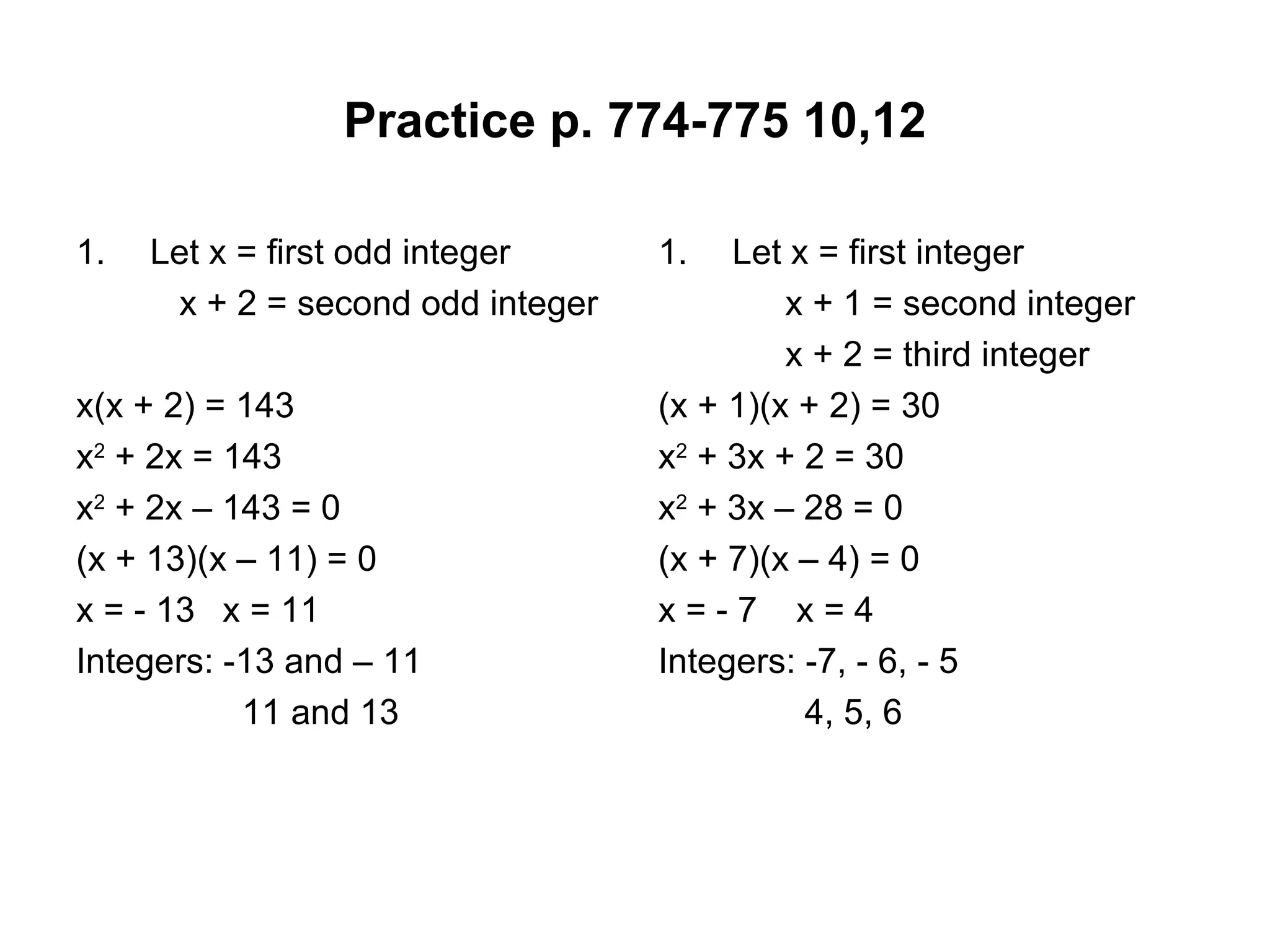
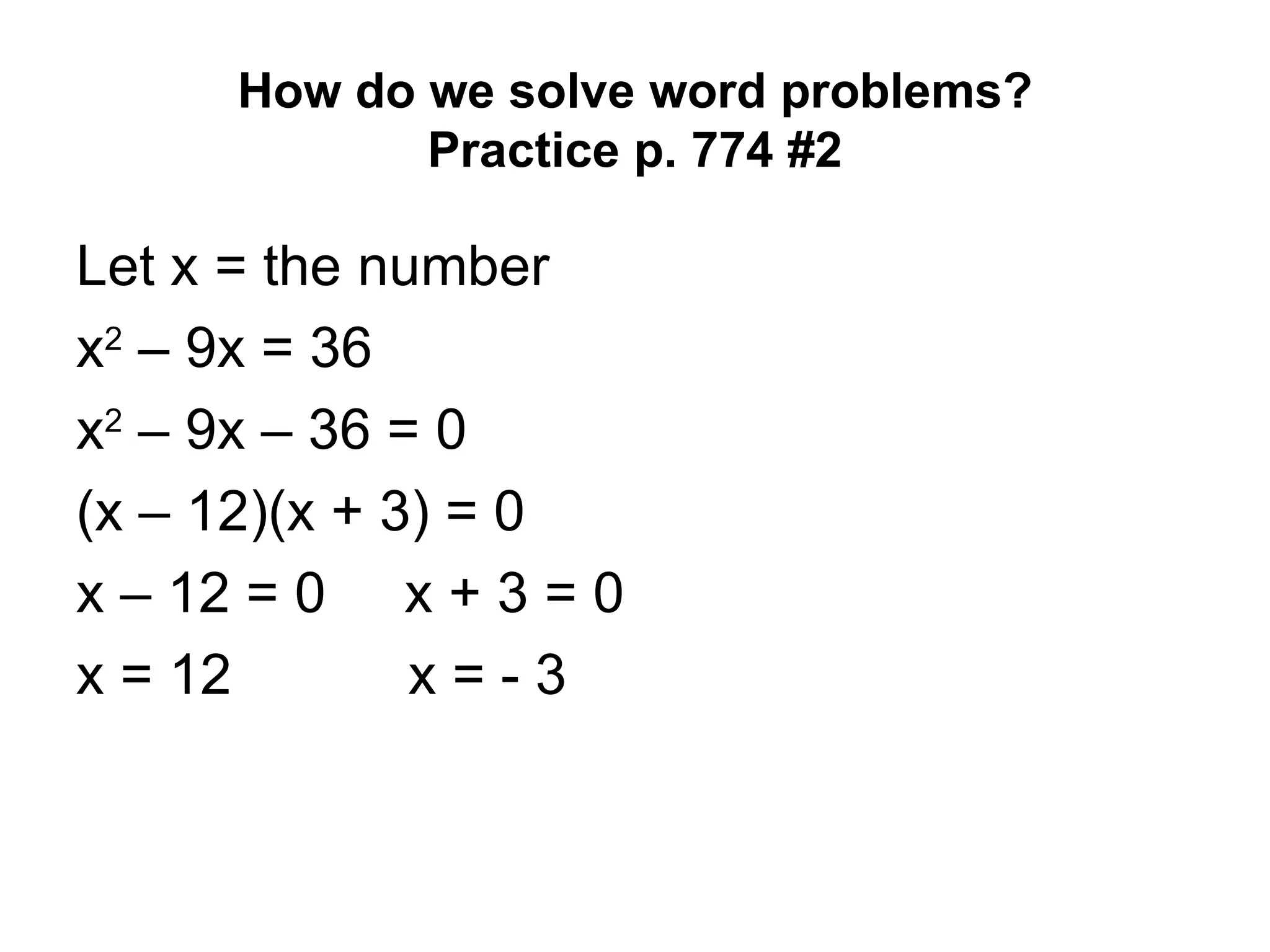
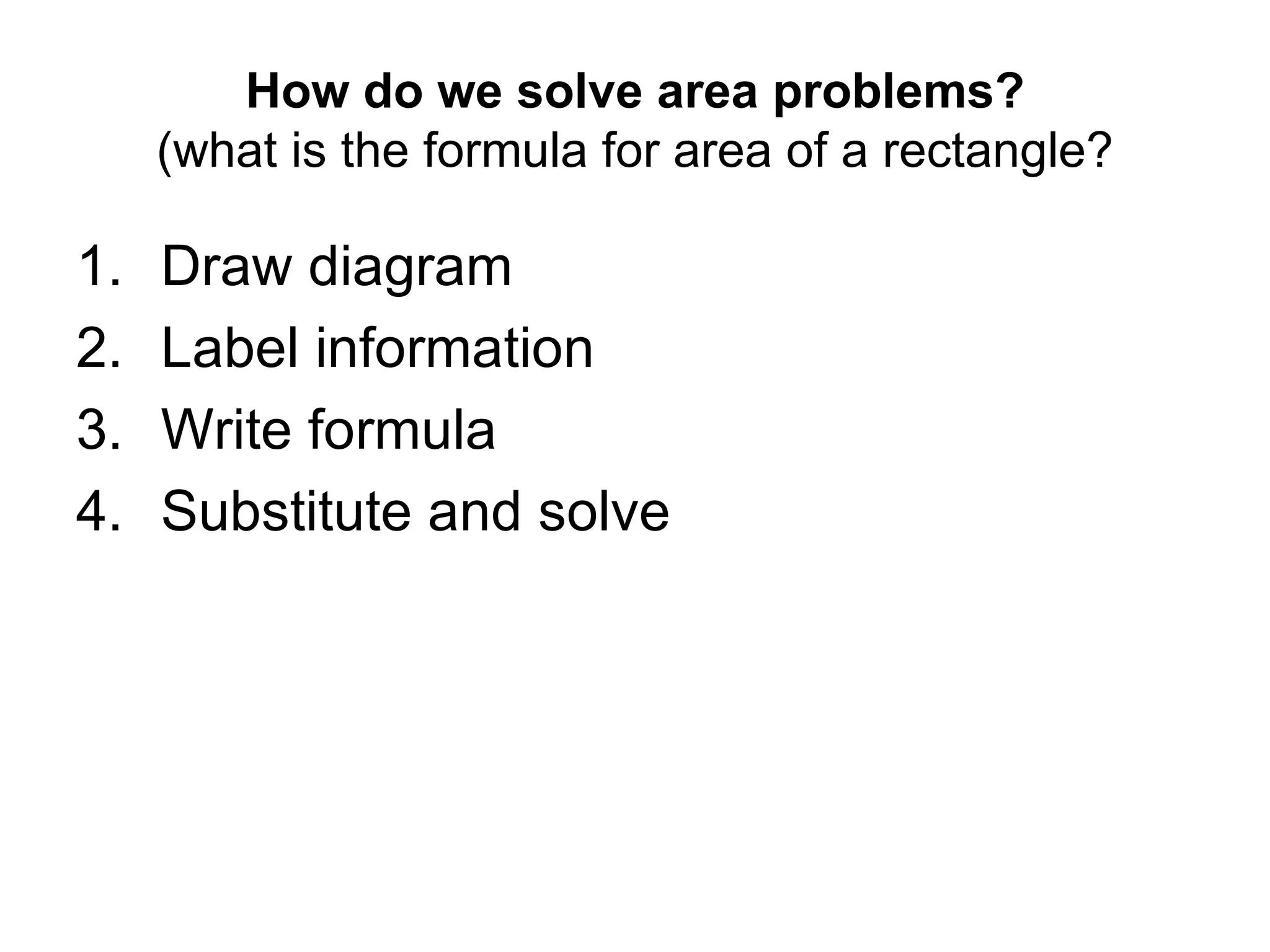
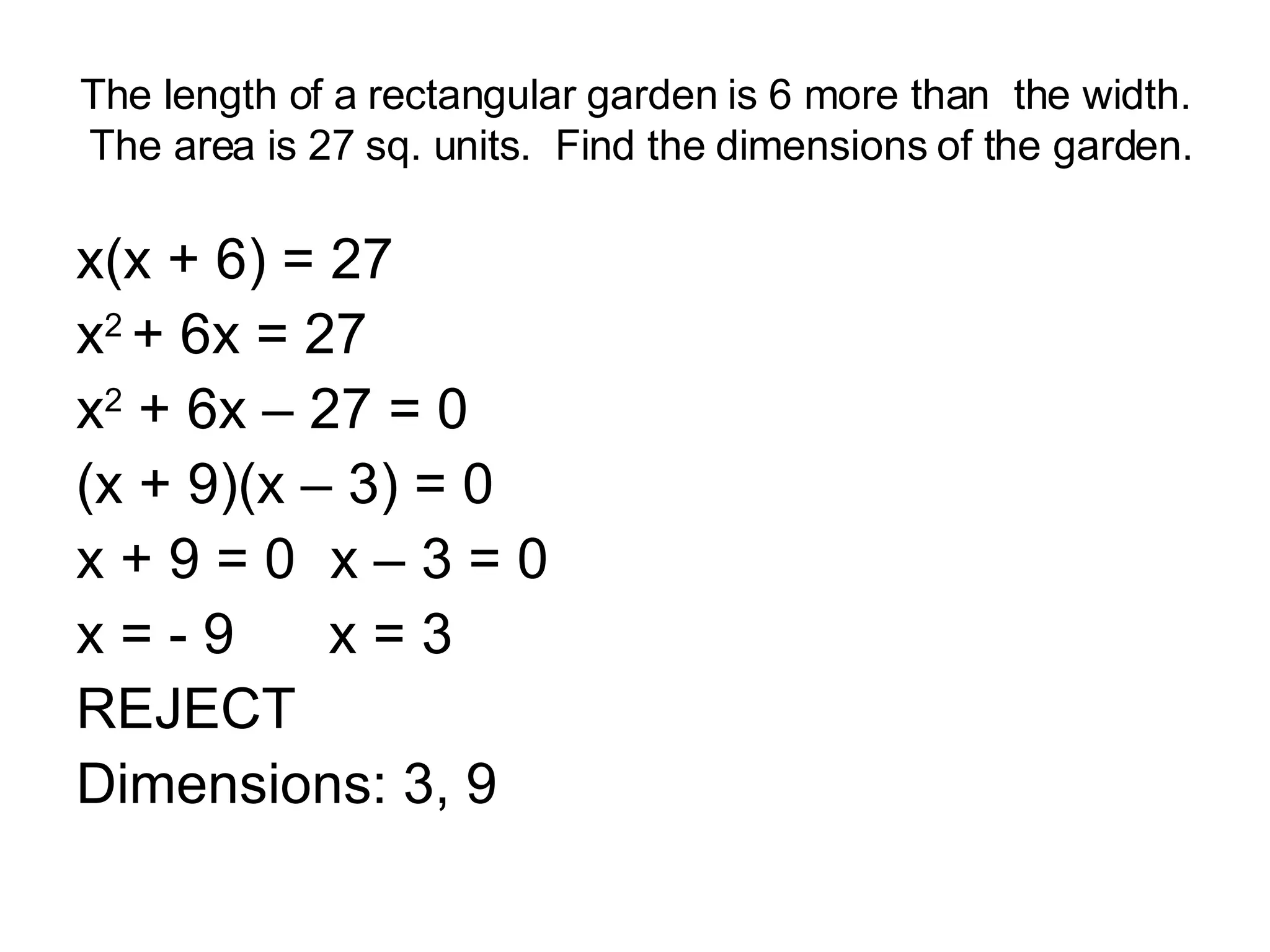
This document provides instructions for solving word problems involving quadratic equations. It explains how to write let statements and equations, solve for consecutive integers or areas, and check solutions. Sample problems are worked through, such as finding two consecutive integers whose sum is 13, or the dimensions of a rectangular garden with an area of 27 square units.







Introduction to solving word problems involving quadratic equations, focusing on using 'let' statements for consecutive integers.
Steps to solve consecutive integer problems, including writing equations and practical examples from practice exercises.
Methodology for tackling various word problems, specifically illustrating how to set up and solve equations.
Approach for area problems involving rectangles, including formula use, diagramming, and example calculations.